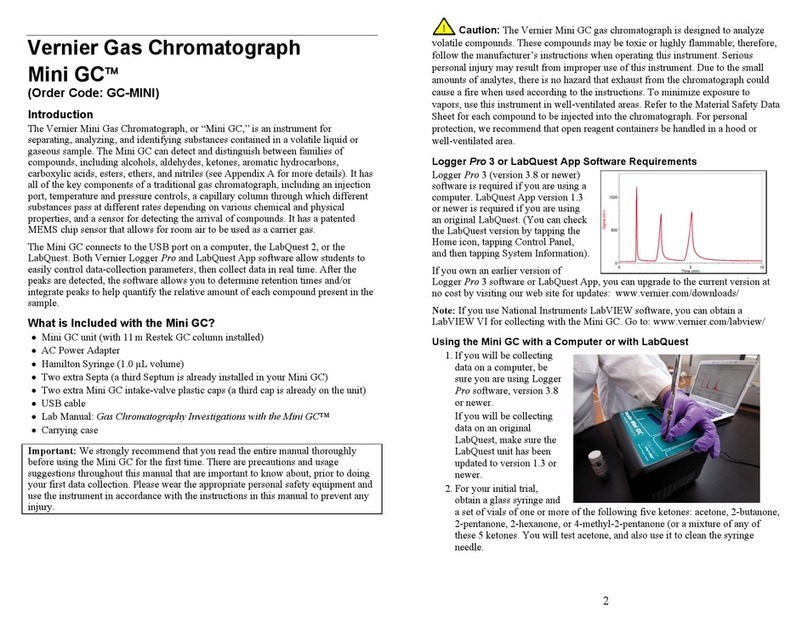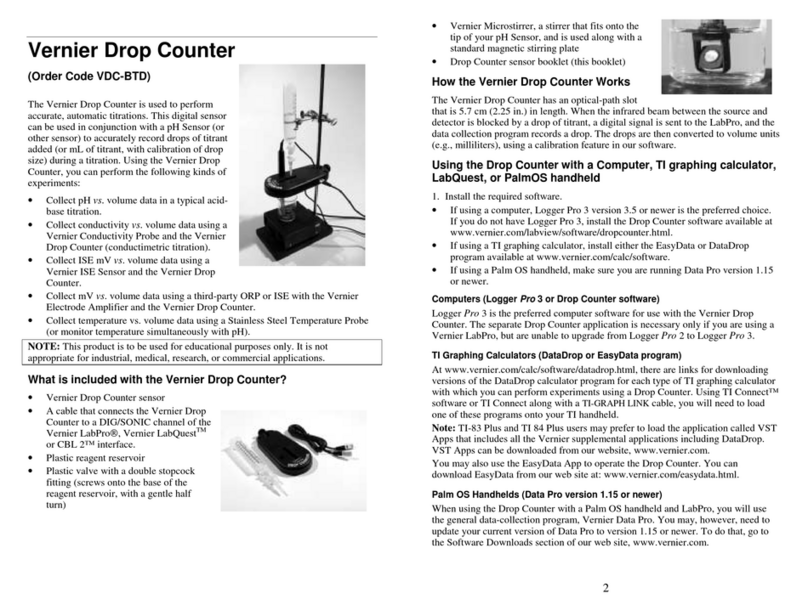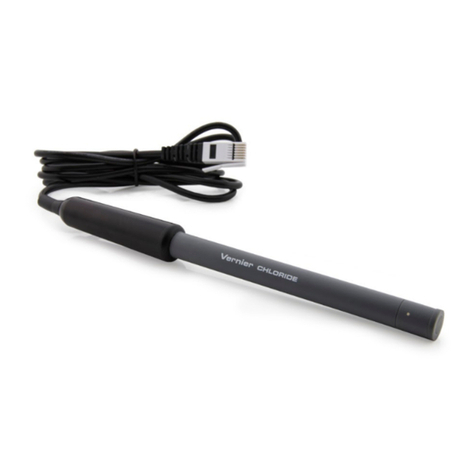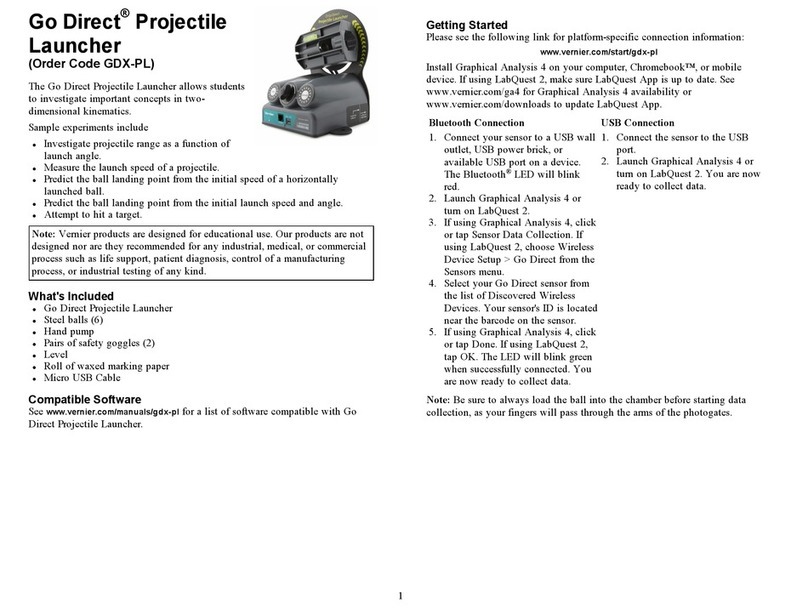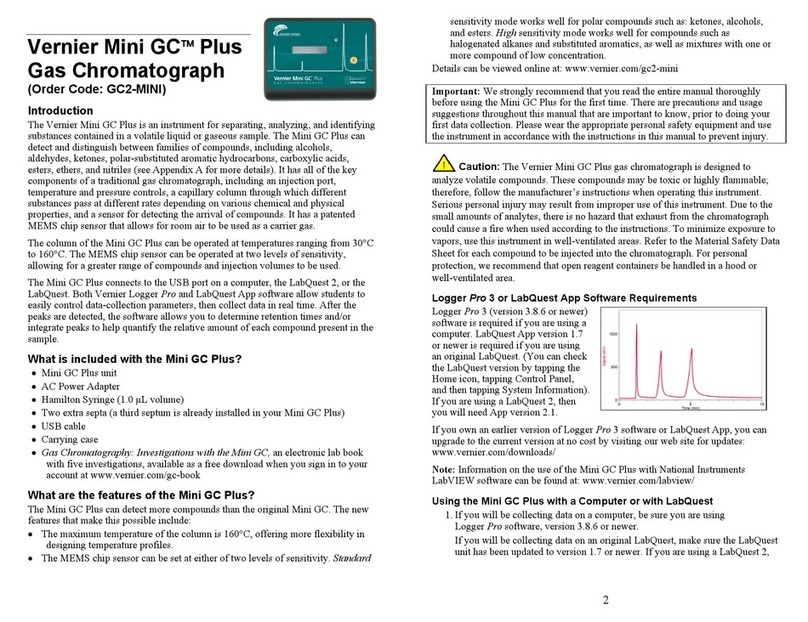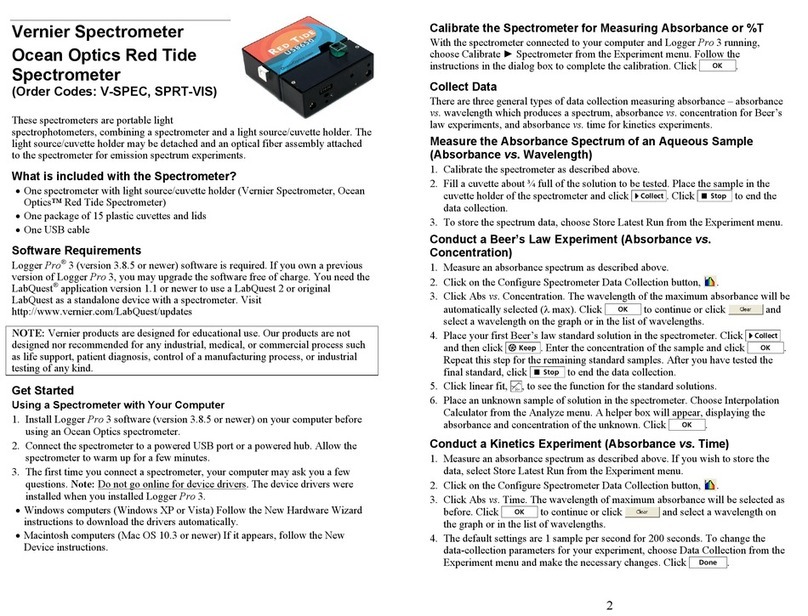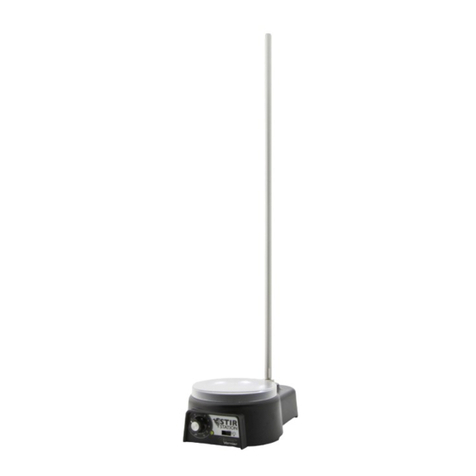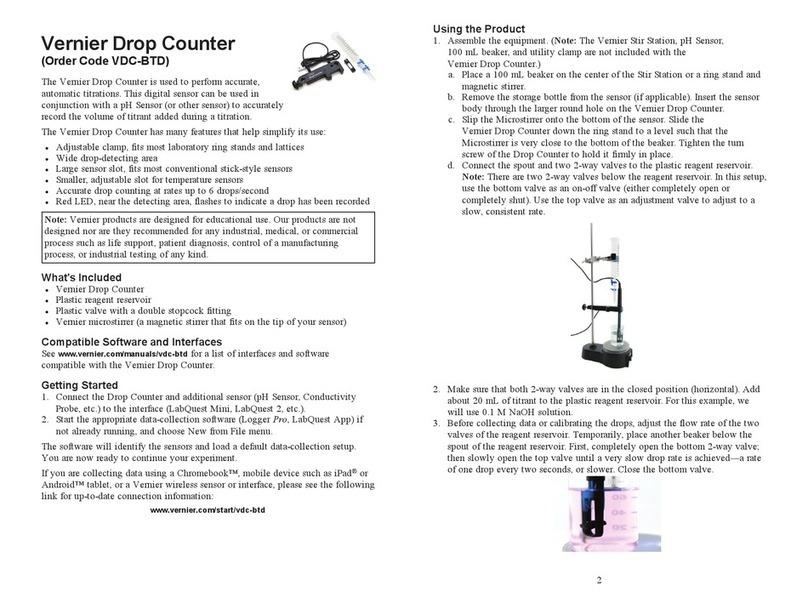
1
should be immersed. Make sure no air bubbles are trapped below the ISE.
Important: Do not leave the ISE soaking for more than 24 hours. Important: If
you plan to use the electrode outside the range of the standards provided, you
will need to prepare your own standards and use those for soaking.
Note: If the ISE needs to be transported to the field during the soaking process,
use the Short-Term ISE Soaking Bottle. Remove the cap from the bottle and fill
it 3/4 full with High Standard. Slide the bottle’s cap onto the ISE, insert it into
the bottle, and tighten.
For long-term storage (greater than 24 hours) make sure the sensor is stored in its
storage bottle with the sponge slightly damp.
Collecting Data
1. Remove the storage bottle from the soaking solution (high standard).
Thoroughly rinse the lower section of the probe, especially around the tip,
using distilled or deionized water. Blot dry with a paper towel.
2. Insert the tip of the ISE into the aqueous sample to be tested. Important:
Make sure the ISE is not resting on the bottom of the container, the white
reference contacts near the tip of the electrode are immersed, and no air
bubbles are trapped below the ISE. Note: Do not completely submerge the
sensor.
3. Hold the ISE still until the reading stabilizes and record the displayed
reading. Note: With some aqueous samples, especially those at high
concentrations, it could take several minutes for the reading of the Calcium
ISE to stabilize. If you know the approximate concentrations of your
samples, it is best to analyze them from lowest concentration to highest.
Note: Readings are reported in mV. To convert this to concentration, refer to the
How the Sensor Works section of this user manual.
Specifications
Range (mV) –1000 mV to +1000 mV
Range
(concentration)
1 to 40,000 mg/L (or ppm)
Reproducibility
(precision)
±30 mV
Interfering ions Pb2+, Hg2+, Si2+, Fe2+, Cu2+, Ni2+, NH3, Na+, Li+, K+,
Ba2+, Zn2+, Mg2+
pH range 2–8 (no pH compensation)
Temperature range 0–40°C (no temperature compensation)
Electrode slope +26 ±2 mV/decade at 25°C
Go Direct®Calcium Ion-
Selective Electrode BNC
(Order Code GDX-CA-BNC)
The Go Direct Calcium Ion-Selective Electrode BNC is used to measure the
concentration of calcium (Ca2+) ions in aqueous samples. It is designed to be
used with the Vernier Go Direct Electrode Amplifier (order code GDX-EA).
Note: Vernier products are designed for educational use. Our products are not
designed nor are they recommended for any industrial, medical, or commercial
process such as life support, patient diagnosis, control of a manufacturing
process, or industrial testing of any kind.
What's Included
lGo Direct Calcium Ion-Selective Electrode BNC, packed in a storage bottle
with a damp sponge
l30 mL bottle of High Standard solution with SDS (1000 mg/L Ca2+)
l30 mL bottle of Low Standard solution with SDS (10 mg/L Ca2+)
lShort-Term ISE Soaking Bottle
Using the Product
To prepare the electrode to make measurements, follow this procedure:
lConnect the Ion-Selective Electrode BNC to the Go Direct Ion-Selective
Electrode Amplifier. Push the BNC connector of the electrode onto the
connector on the amplifier, then turn the BNC connector about one-half turn
clockwise.
lConnect the amplifier to your computer, Chromebook™, LabQuest 2, or
mobile device and run the data-collection software. Change the sensor
channel to the appropriate ion or Potential, if necessary.
lYour ISE needs to be prepared before use. This includes a 30-minute soak in
the High Standard solution.
lIf you plan to use the electrode outside the range of the standards provided,
you will need to prepare your own standards and use those for soaking and
calibration.
lThe ISE should not rest on the bottom of the container.
lThe small white reference contacts near the tip of the electrode should be
immersed.
lMake sure no air bubbles are trapped below the ISE.
lDo not leave the ISE soaking for more than 24 hours.
Note: Do not completely submerge the sensor. The BNC connection is not
waterproof.
Preparing the Calcium ISE for Use
Soak the electrode in the High Standard solution (included with the ISE) for
approximately 30 minutes. The ISE should not rest on the bottom of the
container, and the small white reference contacts near the tip of the electrode






